coolant MITSUBISHI ENDEAVOR 2004 Service Repair Manual
[x] Cancel search | Manufacturer: MITSUBISHI, Model Year: 2004, Model line: ENDEAVOR, Model: MITSUBISHI ENDEAVOR 2004Pages: 3870, PDF Size: 98.47 MB
Page 792 of 3870
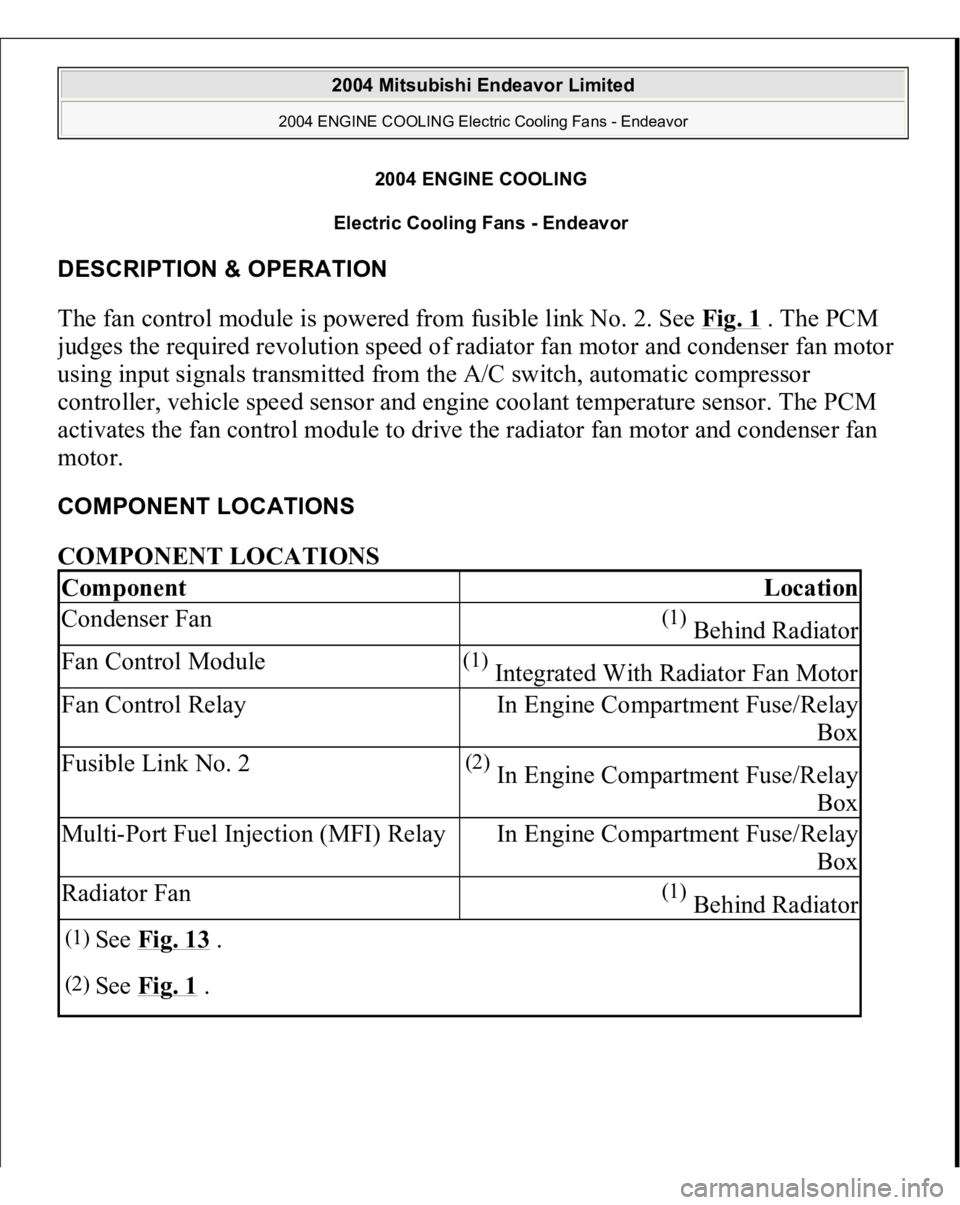
2004 ENGINE COOLING
Electric Cooling Fans - Endeavor
DESCRIPTION & OPERATION The fan control module is powered from fusible link No. 2. See Fig. 1
. The PCM
judges the required revolution speed of radiator fan motor and condenser fan motor
using input signals transmitted from the A/C switch, automatic compressor
controller, vehicle speed sensor and engine coolant temperature sensor. The PCM
activates the fan control module to drive the radiator fan motor and condenser fan
motor. COMPONENT LOCATIONS COMPONENT LOCATIONS Component
Location
Condenser Fan
(1) Behind Radiator
Fan Control Module
(1) Integrated With Radiator Fan Motor
Fan Control Relay
In Engine Compartment Fuse/Relay
Box
Fusible Link No. 2
(2) In Engine Compartment Fuse/Relay
Box
Multi-Port Fuel Injection (MFI) Relay
In Engine Compartment Fuse/Relay
Box
Radiator Fan
(1) Behind Radiator
(1)
See Fig. 13
.
(2)
See Fig. 1
.
2004 Mitsubishi Endeavor Limited
2004 ENGINE COOLING Electric Cooling Fans - Endeavor
2004 Mitsubishi Endeavor Limited
2004 ENGINE COOLING Electric Cooling Fans - Endeavor
Page 807 of 3870
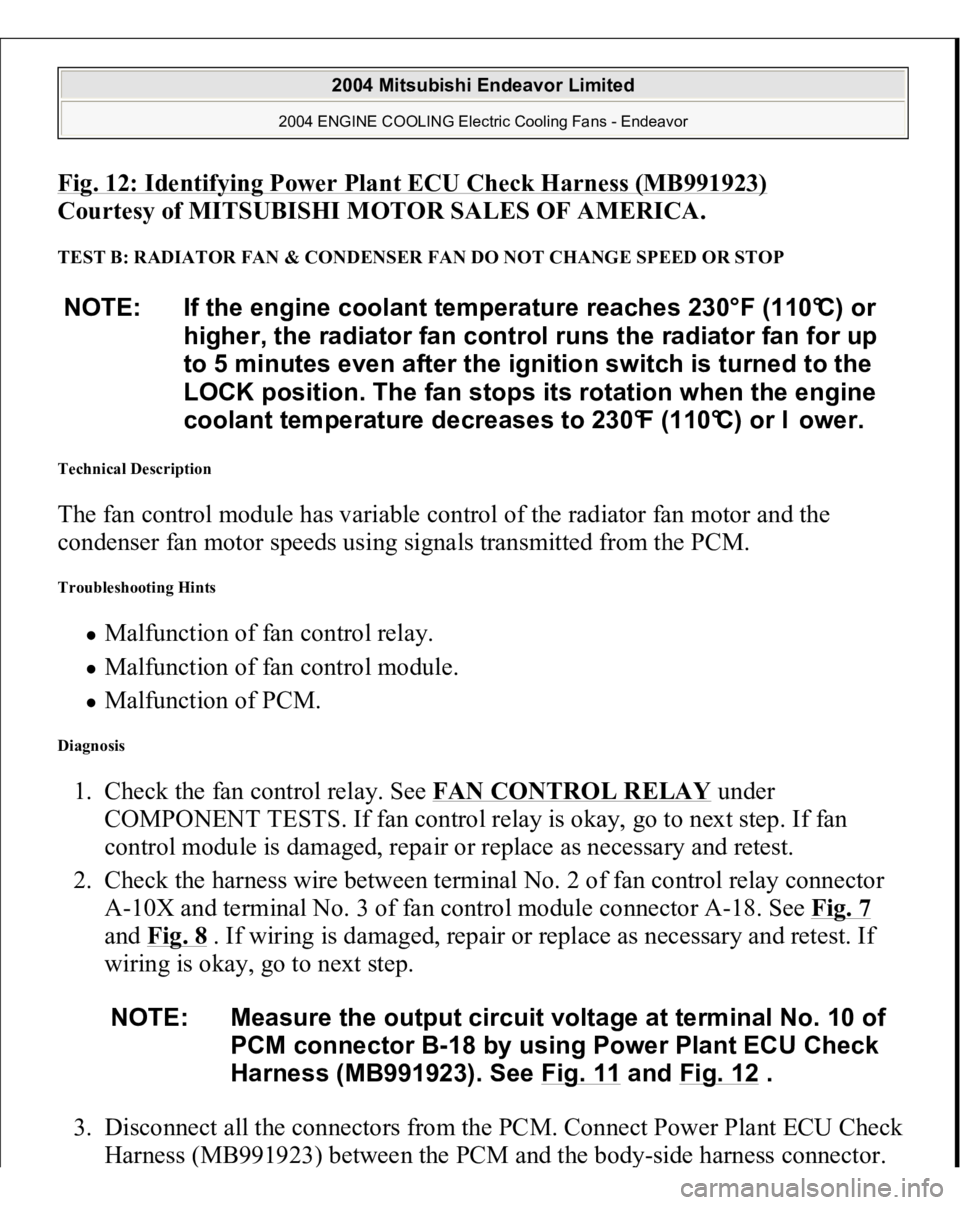
Fig. 12: Identifying Power Plant ECU Check Harness (MB991923)
Courtesy of MITSUBISHI MOTOR SALES OF AMERICA.
TEST B: RADIATOR FAN & CONDENSER FAN DO NOT CHANGE SPEED OR STOP Technical Description The fan control module has variable control of the radiator fan motor and the
condenser fan motor speeds using signals transmitted from the PCM. Troubleshooting Hints
Malfunction of fan control relay. Malfunction of fan control module. Malfunction of PCM.
Diagnosis 1. Check the fan control relay. See FAN CONTROL RELAY
under
COMPONENT TESTS. If fan control relay is okay, go to next step. If fan
control module is damaged, repair or replace as necessary and retest.
2. Check the harness wire between terminal No. 2 of fan control relay connector
A-10X and terminal No. 3 of fan control module connector A-18. See Fig. 7
and Fig. 8
. If wiring is damaged, repair or replace as necessary and retest. If
wiring is okay, go to next step.
3. Disconnect all the connectors from the PCM. Connect Power Plant ECU Check
Harness (MB991923
) between the PCM and the bod
y-side harness connector.
NOTE: If the engine coolant temperature reaches 230°F (110°C) or
higher, the radiator fan control runs the radiator fan for up
to 5 minutes even after the ignition switch is turned to the
LOCK position. The fan stops its rotation when the engine
coolant temperature decreases to 230°F (110°C) or l ower.
NOTE: Measure the output circuit voltage at terminal No. 10 of
PCM connector B-18 by using Power Plant ECU Check
Harness (MB991923). See Fig. 11
and Fig. 12
.
2004 Mitsubishi Endeavor Limited
2004 ENGINE COOLING Electric Cooling Fans - Endeavor
Page 809 of 3870
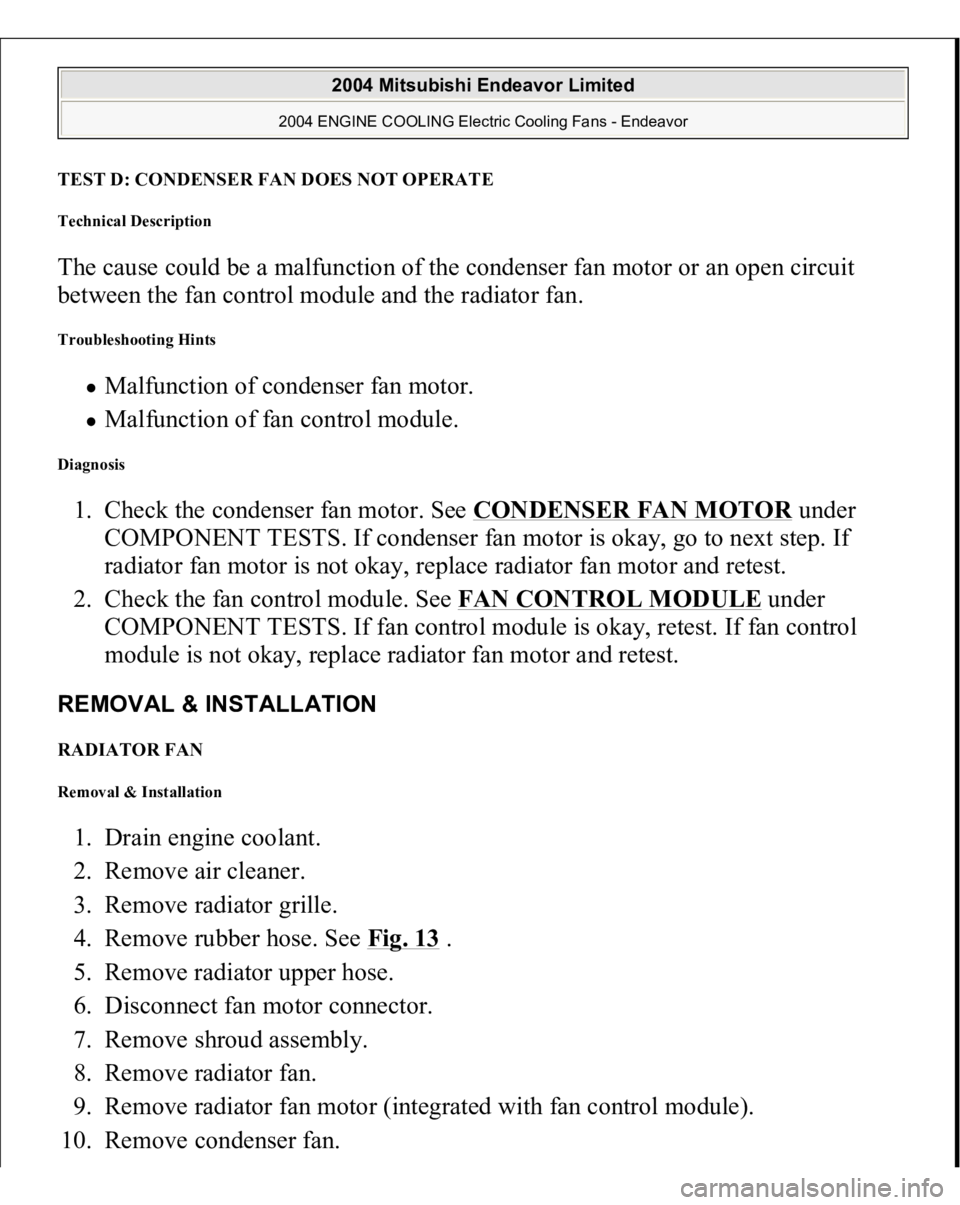
TEST D: CONDENSER FAN DOES NOT OPERATETechnical Description The cause could be a malfunction of the condenser fan motor or an open circuit
between the fan control module and the radiator fan. Troubleshooting Hints
Malfunction of condenser fan motor. Malfunction of fan control module.
Diagnosis 1. Check the condenser fan motor. See CONDENSER FAN MOTOR
under
COMPONENT TESTS. If condenser fan motor is okay, go to next step. If
radiator fan motor is not okay, replace radiator fan motor and retest.
2. Check the fan control module. See FAN CONTROL MODULE
under
COMPONENT TESTS. If fan control module is okay, retest. If fan control
module is not okay, replace radiator fan motor and retest.
REMOVAL & INSTALLATION RADIATOR FAN Removal & Installation 1. Drain engine coolant.
2. Remove air cleaner.
3. Remove radiator grille.
4. Remove rubber hose. See Fig. 13
.
5. Remove radiator upper hose.
6. Disconnect fan motor connector.
7. Remove shroud assembly.
8. Remove radiator fan.
9. Remove radiator fan motor (integrated with fan control module).
10. Remove condenser fan.
2004 Mitsubishi Endeavor Limited
2004 ENGINE COOLING Electric Cooling Fans - Endeavor
Page 1066 of 3870

2004 ENGINE COOLING
Specifications & Drive Belt Routing - Endeavor
COOLING SYSTEM BLEEDING 1. Using LLC Changer (MB991871), refill cooling system with appropriate
mixture between 30-60% anti-freeze (depending on weather conditions). See
Fig. 1
. Typically a solution of 50% anti-freeze and 50% distilled water is
sufficient for most areas. A solution of 50% anti-freeze and 50% water has a
freezing point of -32.8°F (-31°C).
2. Reinstall the radiator cap.
3. Start the engine and let it warm up until the thermostat opens.
4. After repeatedly revving the engine up to 3000 RPM several times, shut off the
engine.
5. Remove the radiator cap after engine has become cold, completely fill the
radiator with coolant. Reinstall the cap.
6. Ensure coolant in the reserve tank is between the FULL and LOW marks. Add
coolant if necessar
y.
CAUTION: DO NOT use alcohol or methanol anti-freeze or any
engine coolants mixed with alcohol or methanol anti-
freeze. The use of an improper anti-freeze can cause
corrosion of the aluminum components.
CAUTION: DO NOT overfill the reserve tank.
2004 Mitsubishi Endeavor Limited
2004 ENGINE COOLING Specifications & Drive Belt Routing - Endeavor
2004 Mitsubishi Endeavor Limited
2004 ENGINE COOLING Specifications & Drive Belt Routing - Endeavor
Page 1080 of 3870
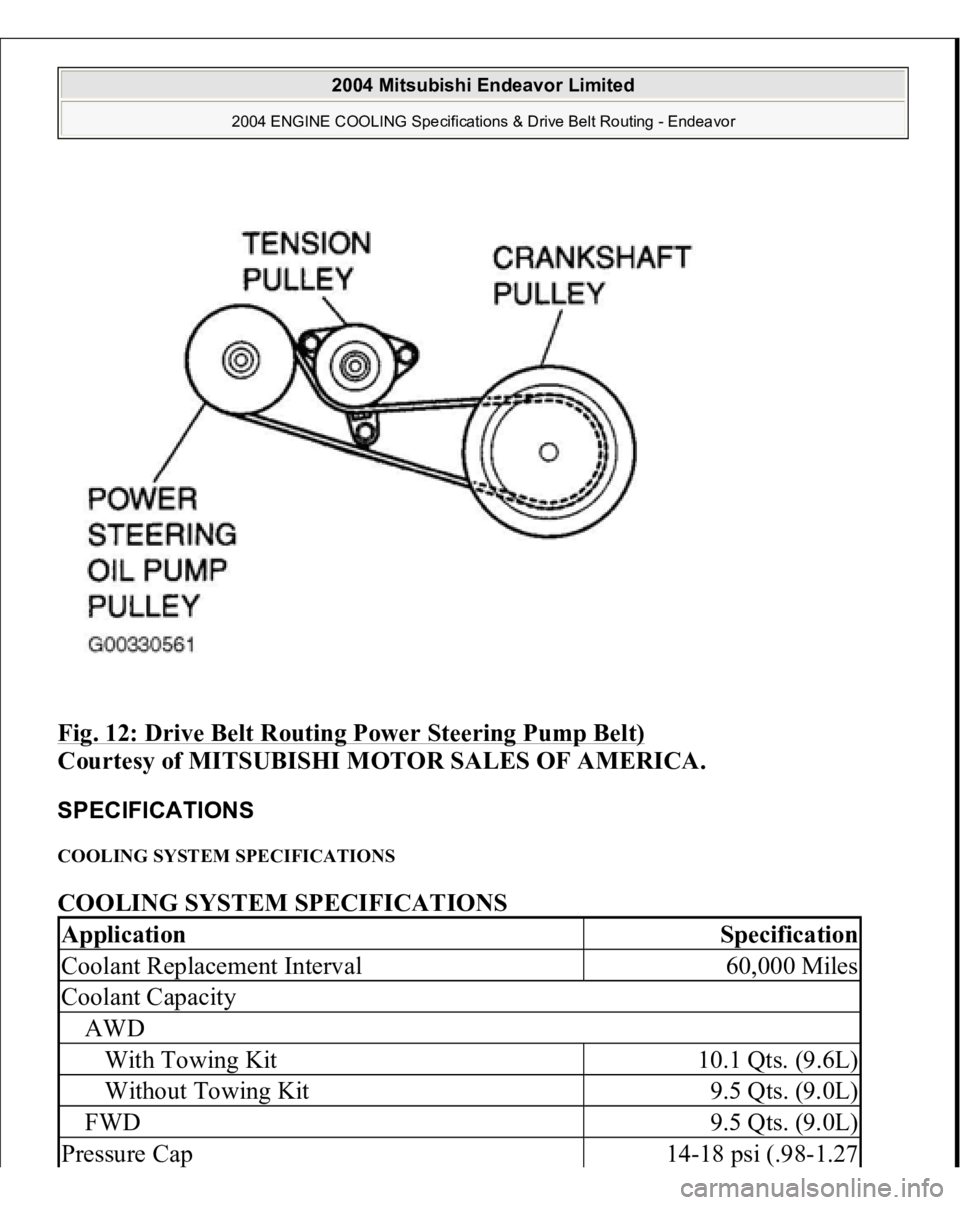
Fig. 12: Drive Belt Routing Power Steering Pump Belt)
Courtesy of MITSUBISHI MOTOR SALES OF AMERICA.
SPECIFICATIONS COOLING SYSTEM SPECIFICATIONS COOLING SYSTEM SPECIFICATIONS Application
Specification
Coolant Replacement Interval
60,000 Miles
Coolant CapacityAWDWith Towing Kit
10.1 Qts. (9.6L)
Without Towing Kit
9.5 Qts. (9.0L)
FWD
9.5 Qts. (9.0L)
Pressure Cap
14-18 psi (.98-1.27
2004 Mitsubishi Endeavor Limited
2004 ENGINE COOLING Specifications & Drive Belt Routing - Endeavor
Page 1096 of 3870
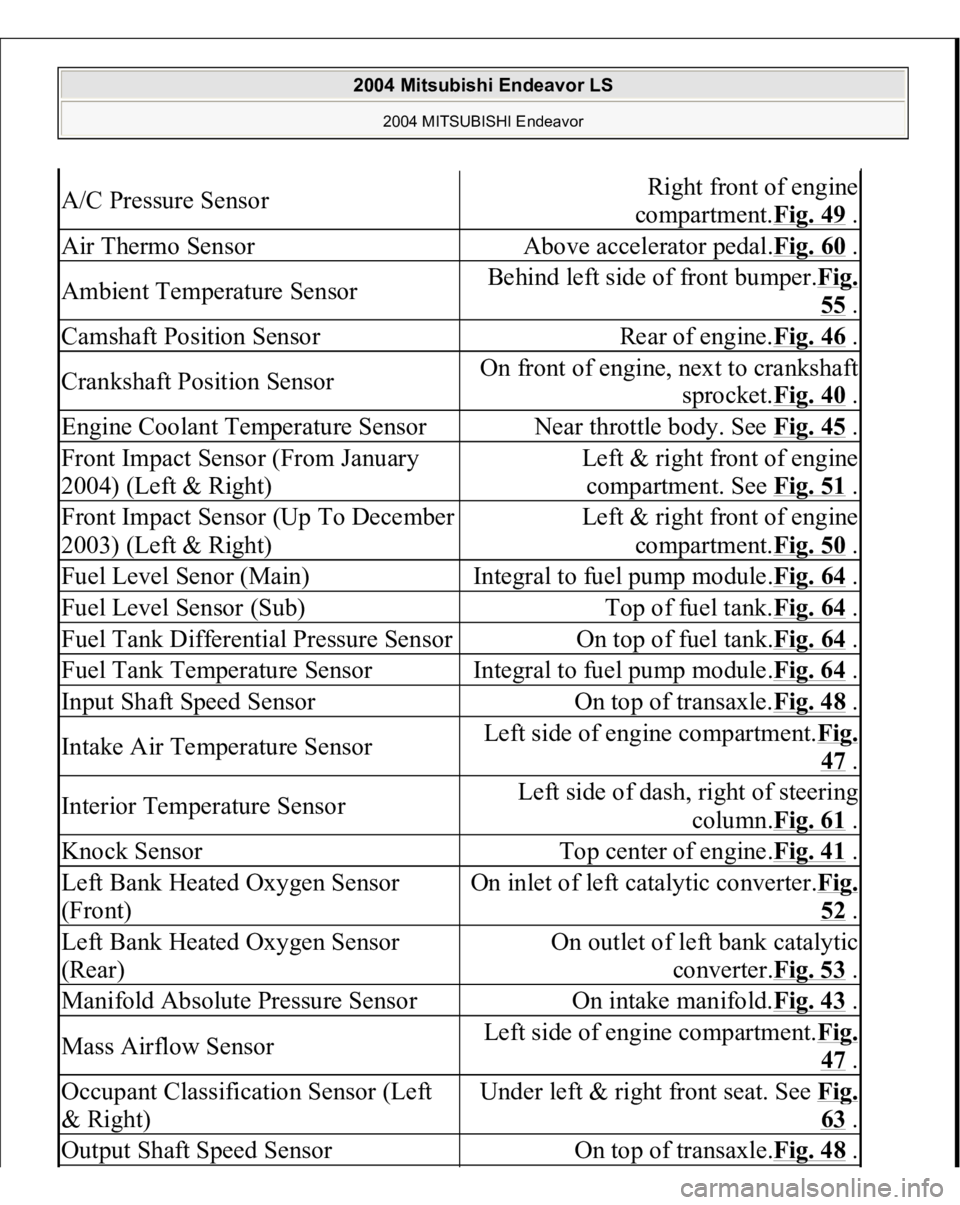
A/C Pressure Sensor
Right front of engine
compartment.Fig. 49
.
Air Thermo Sensor
Above accelerator pedal.Fig. 60
.
Ambient Temperature Sensor
Behind left side of front bumper.Fig.
55 .
Camshaft Position Sensor
Rear of engine.Fig. 46
.
Crankshaft Position Sensor
On front of engine, next to crankshaft
sprocket.Fig. 40
.
Engine Coolant Temperature Sensor
Near throttle body. See Fig. 45
.
Front Impact Sensor (From January
2004) (Left & Right)
Left & right front of engine
compartment. See Fig. 51
.
Front Impact Sensor (Up To December
2003) (Left & Right)
Left & right front of engine
compartment.Fig. 50
.
Fuel Level Senor (Main)
Integral to fuel pump module.Fig. 64
.
Fuel Level Sensor (Sub)
Top of fuel tank.Fig. 64
.
Fuel Tank Differential Pressure Sensor
On top of fuel tank.Fig. 64
.
Fuel Tank Temperature Sensor
Integral to fuel pump module.Fig. 64
.
Input Shaft Speed Sensor
On top of transaxle.Fig. 48
.
Intake Air Temperature Sensor
Left side of engine compartment.Fi
g.
47 .
Interior Temperature Sensor
Left side of dash, right of steering
column.Fig. 61
.
Knock Sensor
Top center of engine.Fig. 41
.
Left Bank Heated Oxygen Sensor
(Front)
On inlet of left catalytic converter.Fi
g.
52 .
Left Bank Heated Oxygen Sensor
(Rear)
On outlet of left bank catalytic
converter.Fig. 53
.
Manifold Absolute Pressure Sensor
On intake manifold.Fig. 43
.
Mass Airflow Sensor
Left side of engine compartment.Fi
g.
47 .
Occupant Classification Sensor (Left
& Right)
Under left & right front seat. See Fi
g.
63 .
Output Shaft Speed Sensor
On top of transaxle.Fig. 48
.
2004 Mitsubishi Endeavor LS
2004 MITSUBISHI Endeavor
Page 1188 of 3870
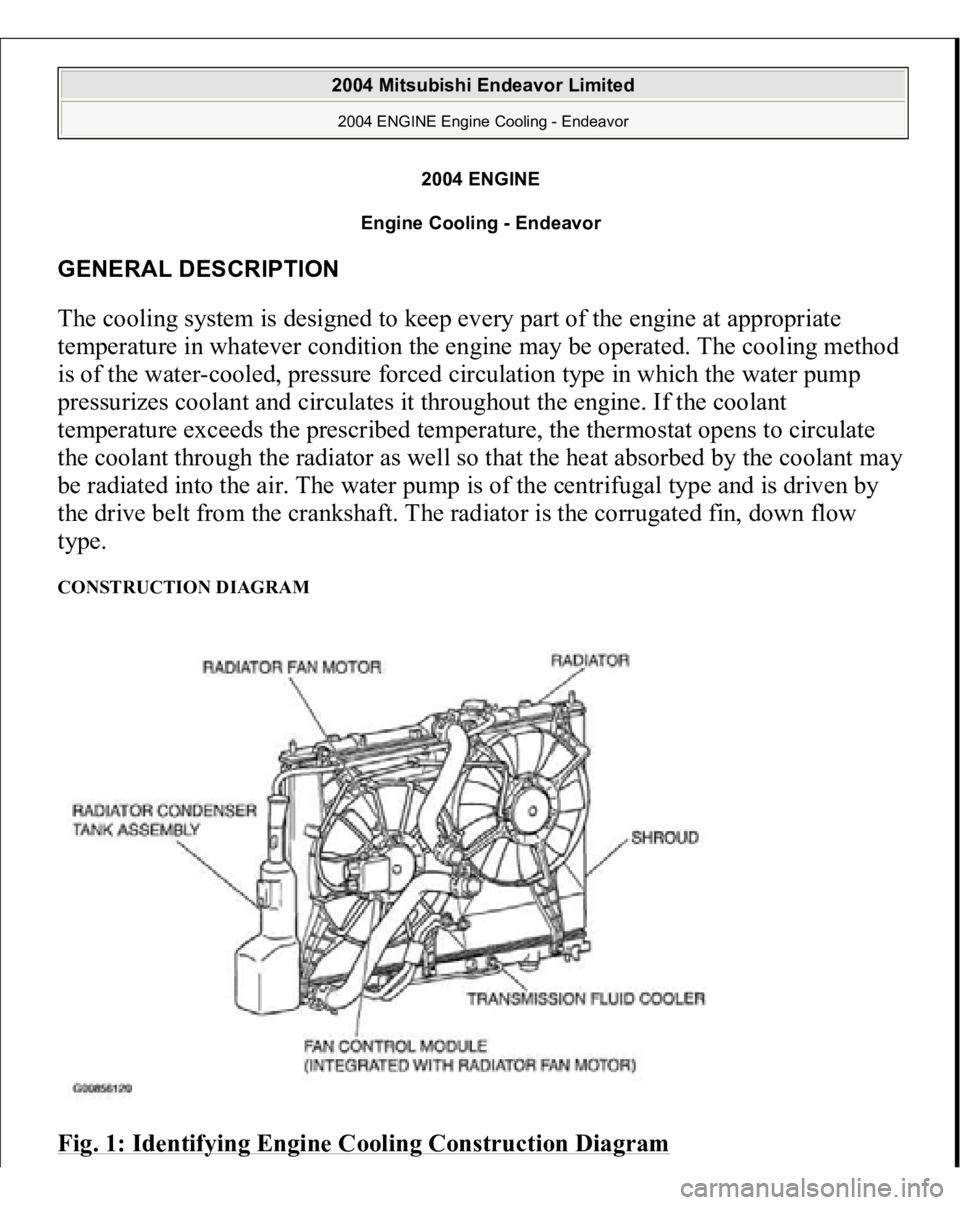
2004 ENGINE
Engine Cooling - Endeavor
GENERAL DESCRIPTION The cooling system is designed to keep every part of the engine at appropriate
temperature in whatever condition the engine may be operated. The cooling method
is of the water-cooled, pressure forced circulation type in which the water pump
pressurizes coolant and circulates it throughout the engine. If the coolant
temperature exceeds the prescribed temperature, the thermostat opens to circulate
the coolant through the radiator as well so that the heat absorbed by the coolant may
be radiated into the air. The water pump is of the centrifugal type and is driven by
the drive belt from the crankshaft. The radiator is the corrugated fin, down flow
type. CONSTRUCTION DIAGRAM Fig. 1: Identifying Engine Cooling Construction Diagram
2004 Mitsubishi Endeavor Limited 2004 ENGINE Engine Cooling - Endeavor
2004 Mitsubishi Endeavor Limited 2004 ENGINE Engine Cooling - Endeavor
Page 1189 of 3870
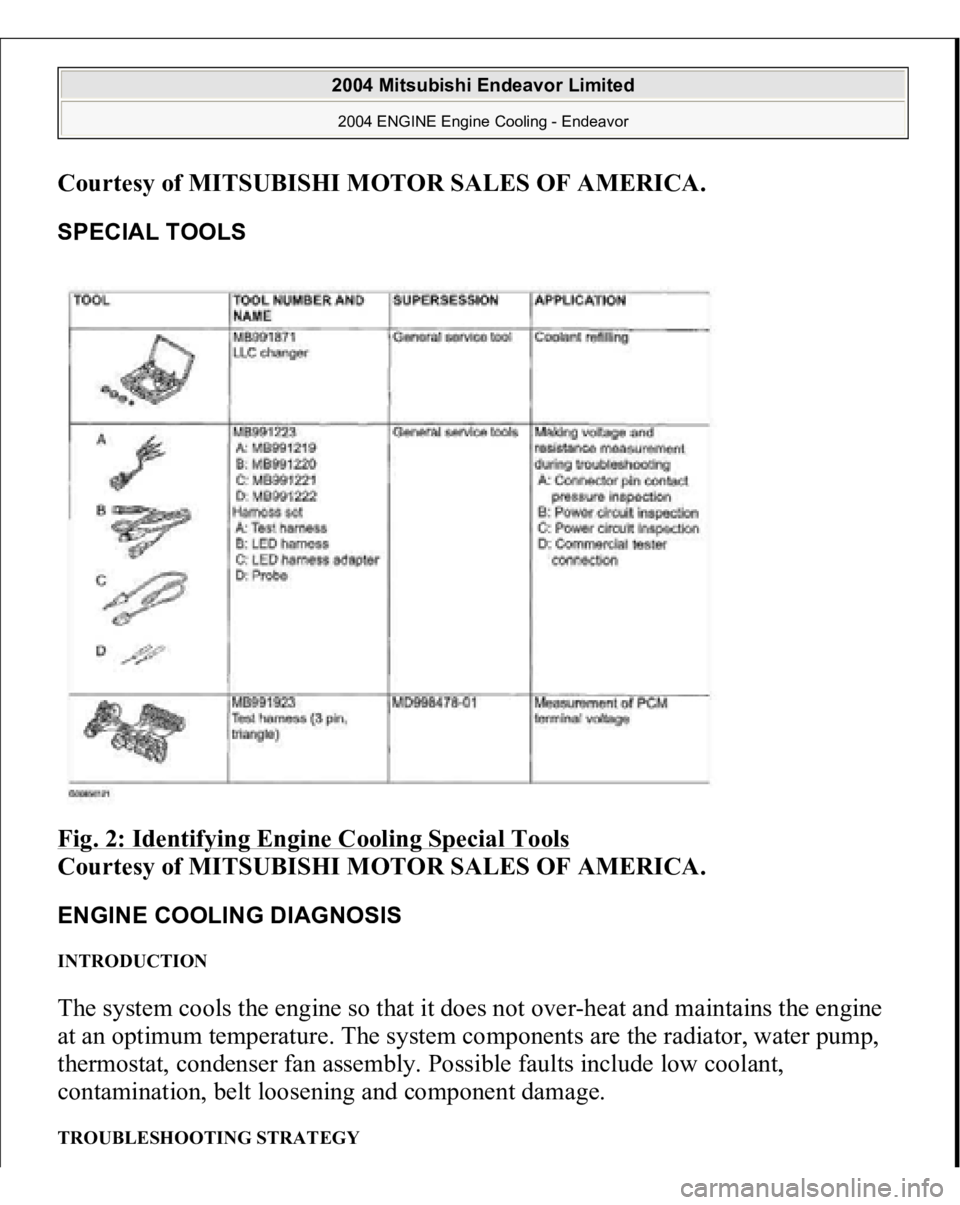
Courtesy of MITSUBISHI MOTOR SALES OF AMERICA
.
SPECIAL TOOLS Fig. 2: Identifying Engine Cooling Special Tools
Courtesy of MITSUBISHI MOTOR SALES OF AMERICA.
ENGINE COOLING DIAGNOSIS INTRODUCTION The system cools the engine so that it does not over-heat and maintains the engine
at an optimum temperature. The system components are the radiator, water pump,
thermostat, condenser fan assembly. Possible faults include low coolant,
contamination, belt loosening and component damage. TROUBLESHOOTING STRATEG
Y
2004 Mitsubishi Endeavor Limited 2004 ENGINE Engine Cooling - Endeavor
Page 1190 of 3870

Use these steps to plan your diagnostic strategy. If you follow them carefully, you
will be sure to find most of the engine cooling faults.
1. Gather information from the customer.
2. Verify that the condition described by the customer exists.
3. Find and repair the malfunction by following the SYMPTOM CHART.
4. Verify that the malfunction is eliminated. SYMPTOM CHART SYMPTOM INSPECTION PROCEDURE CHART SYMPTOM PROCEDURES INSPECTION PROCEDURE 1: Coolant Leak DIAGNOSIS
STEP 1. Check for coolant leaks
.
SYMPTOM
INSPECTION
PROCEDURE
REFERENCE PAGE
Coolant Leak
1
INSPECTION PROCEDURE 1:
Coolant Leak
Engine Overheating
2
INSPECTION PROCEDURE 2:
Engine Overheating
Radiator Fan and
Condenser Fan do not
Operate
3
INSPECTION PROCEDURE 3:
RADIATOR FAN AND
CONDENSER FAN DO NOT
OPERATE
Radiator Fan and
Condenser Fan do not
Change Speed or Stop
4
INSPECTION PROCEDURE 4:
RADIATOR FAN AND
CONDENSER FAN DO NOT CHANGE SPEED OR STOP
Radiator Fan does not
Operate
5
INSPECTION PROCEDURE 5: Radiator Fan does not Operate
Condenser Fan does
not Operate
6
INSPECTION PROCEDURE 6: Condenser Fan does not Operate
2004 Mitsubishi Endeavor Limited 2004 ENGINE Engine Cooling - Endeavor
Page 1191 of 3870

Check that the coolant level is up to the filler neck. Install a radiator tester and
apply 160 kPa (23 psi) pressure, and then check for leakage from the radiator
hose or connections.
WARNING:When pressure testing the cooling system,
slowly release cooling system pressure to avoid
getting burned by hot coolant.
CAUTION:
Be sure to completely clean away any
moisture from the places checked. When the tester is removed, be careful not to
spill any coolant. When installing and removing the tester and
when testing, be careful not to deform the
filler neck of the radiator.
2004 Mitsubishi Endeavor Limited 2004 ENGINE Engine Cooling - Endeavor